So… you get pretty good results shooting in natural light, but every time you use your flash, you suck. Washed out faces and dark backgrounds, yuck! You know it’s time to master flash lighting, but who can afford expensive studio lights, soft boxes, backgrounds, etc.?
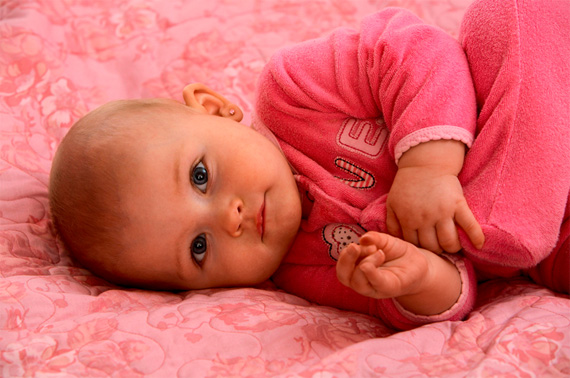
Three Speedlights Used: 105mm lens, F7.1 x 1/200 sec., ISO 400, WB 6000K. 3 speedlights bounced off of 3 white plastic 4’ x 4’ DIY reflectors attached to 3 walls of the baby’s bedroom. One is behind the camera, one left and one right of camera, slightly behind the baby.
You don’t need all that stuff to get professional results. Bounce your speedlights on location. Almost any quality of light can be produced when you know how.
Bouncing light usually softens it. (Bouncing into mirrors and shiny surfaces are the exceptions.) Softness or hardness of the light is determined by the size of the surface the light is bounced off of. The larger the surface, the softer the light is.

One On-Camera Speedlight Used: 150mm lens, F5.6 x 1/100 sec., ISO 400, WB 6000K. On-camera speedlight bounced against a 4’ x 4’ white plastic DIY reflector attached to a wall, left of subject. A small mirror close to subject created the bright highlight on the baby’s head.
This article demonstrates the following techniques:
- Bouncing one speedlight
- Bouncing multiple speedlights
- Light modification and control
- Lighting in tight quarters
- Creating a lighting ratio
- Dragging the shutter
Keys to Effective Bouncing
- Neutral color – Avoid nasty color shifts
- Create a lighting ratio – Not just flat, boring light
- No hot spots in the image area (blown out white areas where the direct flash is striking)
Neutral Color
Bouncing works wonderfully when the bounce surface is neutral in tone, preferably white. Unfortunately, with modern construction there are few white walls available. Avoid bouncing light off of colored surfaces. The light you create will be the same color and probably cause you post-production nightmares.
Ceilings are usually white, but just bouncing off the ceiling can cause shadowed eye sockets (raccoon eyes). You need some light to strike your subject from a lower angle. Seek out the white areas of interiors, such as doors, window shades, etc. You can also drape a door or tall furniture with a white sheet to bounce light off of.
A white reflector on a stand is a better solution; position it anywhere. In tight quarters attach DIY plastic reflectors to walls. The camera should usually be 3–10 feet from the bounced surface. Rotate the speedlight’s head to the perfect bounce angle (similar to a bank shot in billiards). Remember, the closer the distance between speedlight and bounced surface, the harsher the light will be.
DIY Lightweight Plastic Reflector
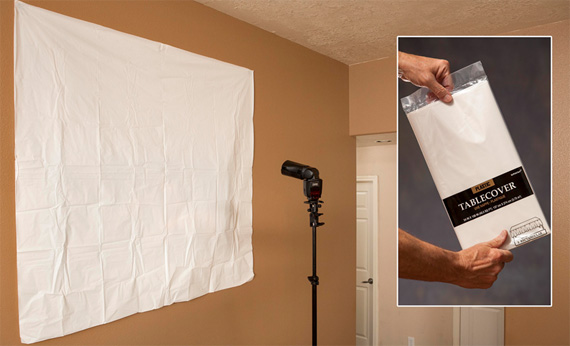
4’x4’ white plastic DIY hanging reflector (only weighs 5 oz.)
- Buy a large rectangular 54” x 108” plastic table cover (under $ 2.00) at a party supply store.
- Fold it in half and tape together with two-sided heavy duty tape (carpet tape).
- Temporarily attach it to a wall with the same stuff – careful not to do any damage! Remove slowly!
Lighting a Subject with a Complicated Background
The best way to evenly light a background is by bouncing light off a white ceiling.

Five Speedlights Used. See Setup Details Below
Use snoots to shield direct light from striking your subject(s) and visible background.
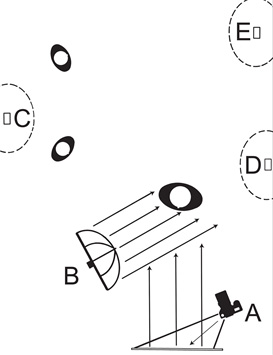 A. On camera “Master” speedlight (set on manual) rotated and bounced off a white reflector for fill light. Light set at ½ power.
A. On camera “Master” speedlight (set on manual) rotated and bounced off a white reflector for fill light. Light set at ½ power.
B. Speedlight placed into an Umbrella Softbox for the main light. Set at ½ power.
C.D.E. Speedlights were positioned out of camera frame with short snoots attached and aimed upward bouncing light off the white ceiling. Lights provided background and accent lighting. All three lights set at full power.
-100mm lens, ISO 400, WB 6000K, f/7.1, 1/200 sec.
Lighting Ratio
A lighting ratio is the comparison of the main light to the fill light. The light from your speedlight can be either. When the flash is brighter than the existing (ambient) light it becomes the main light and the ambient light is the fill. When your flash is less bright that the ambient the reverse happens (flash = fill ; ambient = main).
A photograph is more dramatic when the main and fill light are not the same brightness. The greater the difference between the two, the higher the lighting ratio (more contrast).
Bouncing light usually creates a large light source. Sometimes too large! Super large light sources can create flat, boring light (like an overcast day). Move your flash closer to the bounce surface to increase the contrast (higher lighting ratio).
Don’t bounce your flash directly behind you, except for fill light. Angle it to your left or right, side lighting your subject.
Lighting in Tight Quarters
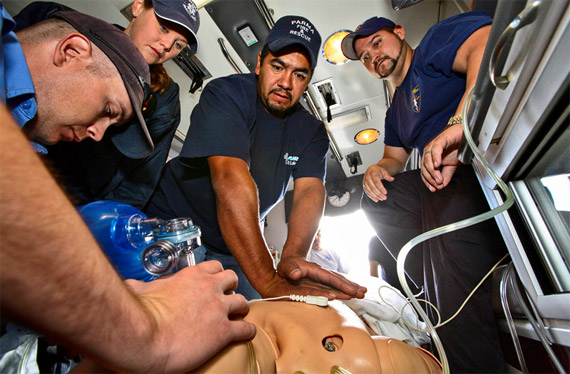
One On-Camera Speedlight Used: 16mm lens, f/8, 1/50 sec., ISO 800, WB 6000K. Light bounced behind the camera into a 4’ x 4’ white plastic DIY reflector. Shutter dragged @ 1/50 sec. to back light the subjects. Built- in wide panel pulled over front of flash head for maximum light spread.
No Hot Spots
Another problem (especially noticeable when shooting with a wide angle lens) is hot spots in the image area (blown out white areas where direct flash is striking). The simplest solution is to crop them out of the photograph. This is easier to do when using medium and longer focal length lens.
Dog-gone-it! Sometimes you just have to shoot wide. Wide angle shots can be very dramatic. The problem is that lots of background shows in the frame. How do you hide the hot spots? The answer is to control the shape of the light you are creating.
You can zoom your flash to its longest focal length, flag the light with something opaque or snoot your speedlight. The best solution is usually snooting. Zooming is less precise and flagging requires cumbersome equipment and takes forever (unless you just flag the speedlight.)
A snoot is a tube shaped light control device placed on the end of your speedlight. It creates a circle of light with defined edges. Snoots are easy to make. Buy 2 mm thick black craft foam and give it a try. The longer the snoot, the smaller the circle of light. It needs to be loose enough to slide up and down but tight enough not to fall off easily.
Speedlight Modifiers Used in Sample Photos
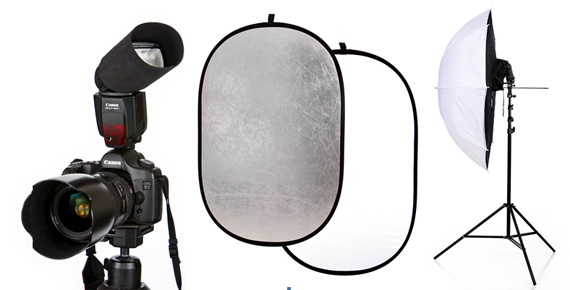
Left – DIY Snoot; Middle – white/silver 60” pop-open reflector; Right – umbrella softbox
Dragging the Shutter

Two Speedlights Used: 70mm lens, F6.3 x 1/60 sec., WB 6000K
- Off camera speedlight bounced off ceiling behind subject. Speedlight set to ¼ power. It created background & hair light.
- On-camera speedlight rotated and bounced into light gray wall behind the subject. Speedlight set to 1/8 power. It created the fill light. No color cast since the wall was gray.
- Slow shutter speed (1/60 sec.) correctly exposed the x-rays and created the highlights on the doctor’s face and hand. This is “dragging the shutter”.
- Camera attached to a monopod for stability.
Creating a Lighting Ratio in Flat Open Shade
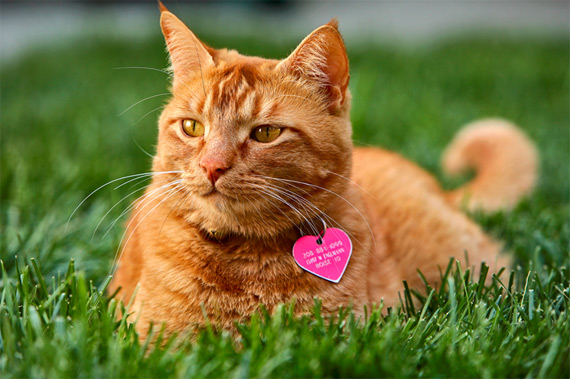
One On-Camera Speedlight Used: 155mm lens, f/5.6, 1/160 sec., ISO 400, WB 7000K
A. Pop-open white reflector was leaned against a light stand approximately 6 feet from the cat.
The on-camera speedlight was set to ETTL+1, head rotated and aimed at the reflector. A 4 ½” snoot was attached to prevent direct light from striking the cat.
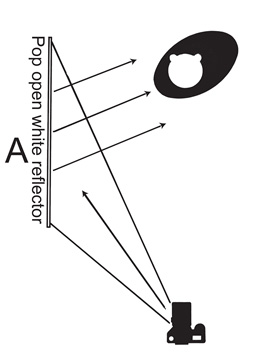
The bounced light created a nice lighting ratio adding interest to the flat lighting of open shade.
About the Author:
John Rogers is an award winning photographer in Boise, Idaho and owner of ProLightSecrets.
Go to full article: How to Bounce a Flash: Professional Guide
What are your thoughts on this article? Join the discussion on Facebook
PictureCorrect subscribers can also learn more today with our #1 bestseller: The Photography Tutorial eBook
The post How to Bounce a Flash: Professional Guide appeared first on PictureCorrect.